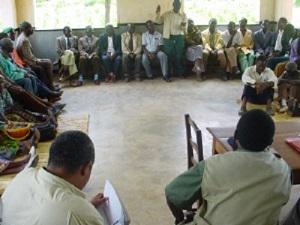Jamestone Smion Kamwendo
Other projects
29 Jul 2008
Scaling Out/Up Environmental Education and Awareness Campaign in Fighting Against Poaching of Threatened Wildlife Species and Environmental Degradation on the Zambian Side of Kasungu Wildlife Reserve through Community Participation
28 Apr 2010
Conservation of Critically Endangered Biodiversity (Fauna and Flora) for Promotion of Eco-Tourism and Livelihoods at Kasungu Wildlife Reserve
Involvement of local communities and stakeholders in this project will facilitate the spread of information about the importance of protecting the cheetah and other wildlife, and importance of conserving the habitats.

Kasungu wildlife reserve formerly known as Kasungu National Park.
Kasungu Wildlife Reserve is the only protected area in the country which supports the endangered cheetah (Acinonyx jubatus) population. In 1989, the total number of cheetahs in this wildlife reserve was over 650. The number decreased rapidly to less than 80 by December last year. This worrisome decline is caused by multiple factors such as illegal hunting for skin and fur, loss of suitable habitats through agriculture, encroachment and bush fires, deforestation, and to a lesser extent disease susceptibility. It has been projected that by 2008, the reserve will have no cheetah should the situation continues unchecked. Against this background, the project thus, seeks to rescue and protect the remaining population of cheetah from becoming extinct.

Consultative meeting with stakeholders, local communities & traditional leaders
The objectives of the project are to:
(i) educate local communities, agricultural landowners and hunters the importance of cheetah and other wildlife;
(ii) raise public awareness on the conservation problems related to hunting, bush fires and deforestation;
(iii) increase community participation in protection of the cheetahs and reforestation of their degraded habitats;
(iv) lobby local communities and stakeholders living around the wildlife reserve to establish wildlife clubs and committees to protect the cheetahs and their habitats;
(v) develop with communities and stakeholders reliable monitoring and surveying techniques.
These objectives will be achieved through organising consultative meetings/workshops/seminars with local communities, traditional leaders, school children and stakeholders including the staff of the Department of National Parks and Wildlife in the area. Public lectures will be given on how best people can protect the endangered cheetah. Environmental education and awareness will be achieved by organising theatre troupes and local bands in the area to sensitise and take environmental messages to communities, school children and stakeholders through participatory methods. People living around the study area will be mobilised to form wildlife clubs and committees, and hands-on-doing on nursery preparation, management and seed propagation will be carried out at the study site to assist them to learn how they can raise seedlings to rehabilitate the degraded habitats for the cheetah.